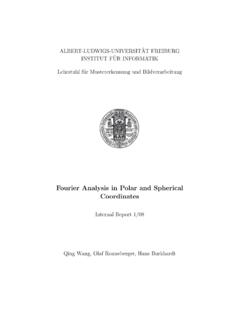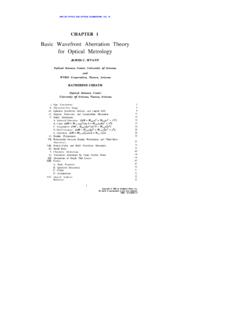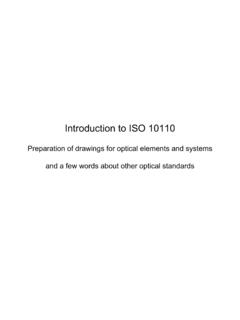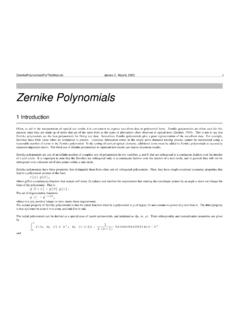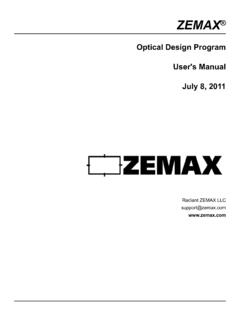Transcription of Clinical Handover at the Bedside Checklist
1 Clinical Handover at the Bedside Checklist Key Message Prior to implementation of Bedside Handover a carefully thought through change management strategy should be developed. (Chaboyer,W. 2008) The local context of the unit, ward and institution needs to be integrated into the design of the standardised process ( flexible standardisation). (OSSIE Guide 2008) Consult, Consult, Consult! Consider: Broad consultation with all staff who work within the designated work area include all nursing staff (and Assistant In Nursing/Enrolled Nurse), admin officers/wardies/cleaners/allied health/ doctors. All staff have input into information requirements for Clinical Handover at the Bedside as well as other types of handovers within the Clinical setting, what is the Multidisciplinary Staff (MDS) , what format is it to take and how will it be communicated for: o Bedside shift-to-shift handovers computer-generated Handover sheet, Handover sheet down-loaded from the Electronic Patient Journey Board (EPJB), etc.
2 O Other Handover types that are different to but aligned/related to Clinical Handover at the Bedside : shift relief and meal breaks between nurses telephone consults between nurses and doctors. Patient Safety Unit Use Focus Group format or similar to generate ideas/identify barriers and develop strategies for change. Use the following questions to provide clarity: 1. What are we doing? 2. Why are we doing it? 3. Why now? 4. What s in it for me? Assist group to identify priority areas for your service area and tailor implementation guideline to meet the specific needs of your area (flexible standardisation). Consider collecting some data to assist staff in identifying issues with the existing Handover process ( audits of missed medication). Apply the 5 Key Principles of Clinical Handover to your work area and ask how each of these principles are going to be applied/demonstrated in your work area : 1.
3 Preparation 2. Organisation 3. Environmental Awareness 4. Transfer of responsibility & accountability 5. Patient/Carer involvement Appoint Change Champions who can influence change for your work area. Reinforce role of Nurse Unit Manager (NUM) in role modelling and educators in education, training in Handover . Set a date for change and Just do it! STAGE ONE (Away from the Bedside setting the scene) Key message: Every patient, Every time Include all nursing staff on duty for shift (ensure ward is covered during meeting Team Leader or NUM directs key outgoing staff to remain on the ward), and key staff from MDT if possible. Meet in the staff designated work area/ office space which is private and free from distraction for Handover Meeting. Nurse Unit Manager or delegated proxy leads meeting in front of the EPJB, Whiteboard or group Handover with Checklist , and goes through all the patients listed providing broad overview of key issues and highlighting any risks (such as unstable pts, those with other risks such as infectious status, allergies), unit or organisational issues impacting: pt transfers, discharges.
4 O This process is both verbal and interactive with provision for clarification of patient information and any other issues identified during the briefing. This stage of Handover should be brief and take no longer than 10 minutes. o Participants refer to the updated Handover sheet (printed out from EPJB if in use) during the briefing (bed charts and medication sheets at patients Bedside ). o Promotes situation awareness, an essential element of effective Handover . Sensitive information test results, psychiatric issues, communicable diseases, Not for Resuscitation (NFR) orders, social/family issues etc, are outlined in this setting and not at the patient s Bedside . Patients/carers are informed of the ward/unit practice of Clinical Handover at the Bedside and invited to be involved and informed as to how they may be involved. STAGE TWO (At the Bedside ) Key message: Bedside Handover ensures that patients remain at the centre of their care.
5 (Chaboyer,W. 2008) (See accompanying Clinical Handover at the Bedside Checklist attached) PREPARE (Principle 1) Allocate patients Update Handover sheet, obtain charts Inform patient of pending Handover Discuss with patient who they would like to present at Handover ( relatives) Request visitors to leave Ensure patient is comfortable pain free, PERFORM SAFETY SCAN(Principle 3) Place call bell within reach Check equipment is functioning Ensure mobility aids within reach Check infusion lines & drainage tubes Review medication chart Review Bedside chart INTRODUCE (Principles 1 & 2) Outgoing team leader: Greets patient. Introduces oncoming staff (including shift coordinator if present). EXCHANGE Clinical INFORMATION (Principles 1 & 2) Use agreed format to exchange information Avoid medical jargon Ongoing staff to clarify & ask questions ( Clinical condition, tests/procedures, ADL s, D/C planning).
6 INVOLVE PATIENT (Principles 4 & 5) Ask patient if they have any questions or comments. Invite patient to confirm and clarify Oncoming staff to discuss (with patient) care requirements for the following shift. COMPLETE Handover (Principles 4 & 5) Ask patient if they have any final questions. Ask oncoming staff if they have any questions. 99% retention rate is achievedusing verbal Handover combined with accompanying pre-printed handout containing all relevant patient information. Refer to CH tool CAT Oncoming staff:Communicate with patient when you plan to review them this shiftAssess your patient Exchange sensitive information (as above) during stage one and outside of patient s roomShift Coordinator Attend Bedside Handover for own patients Receive an update from oncoming RN s in each team/partnership after Bedside Handover has been completed. PROCEED TO THE NEXT PATIENTPATIENT INVOLVEMENT The Patient as Active Participant All patients are asked if they wish to participate in Bedside Handover .
7 Some patients may not be able to participate, such as those that are experiencing confusion, decreased level of consciousness or who have expressed a wish not to participate. It is recommended that patients be advised on admission that they will be roused (if asleep) for Bedside Handover when necessary. THE PRINCIPLES 1 Preparation 2 Organisation 3 Environmental awareness 4 Transfer of responsibility and accountability 5 Patient/Carer involvement Based on a model developed by W. Zernike, The Wesley Hospital, Jan 2010 Clinical Handover at the Bedside Checklist










